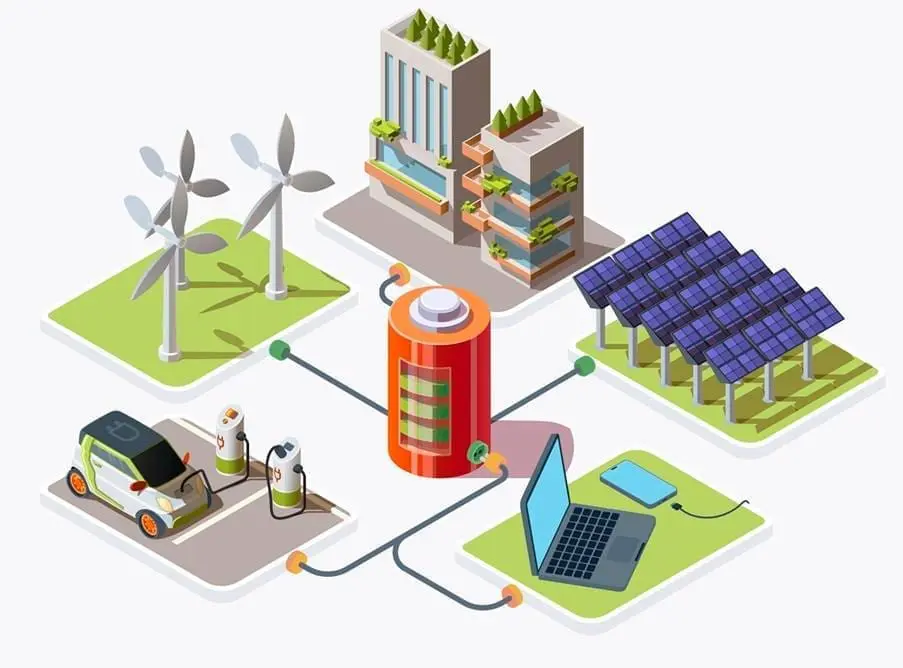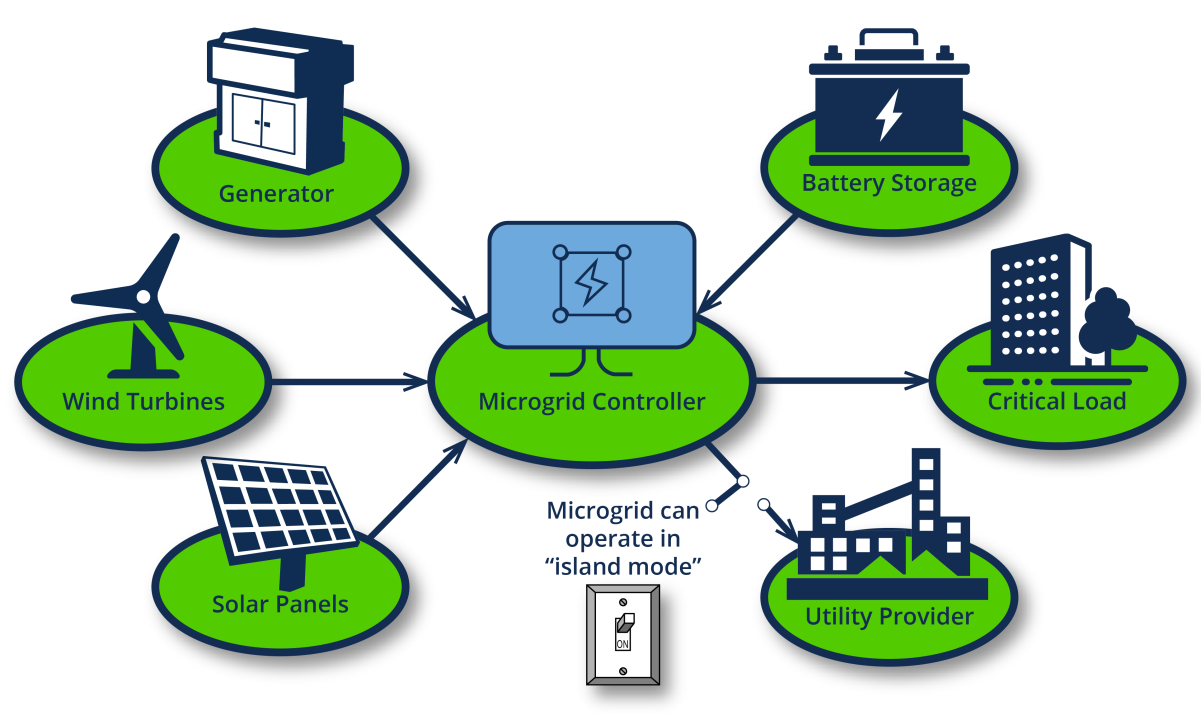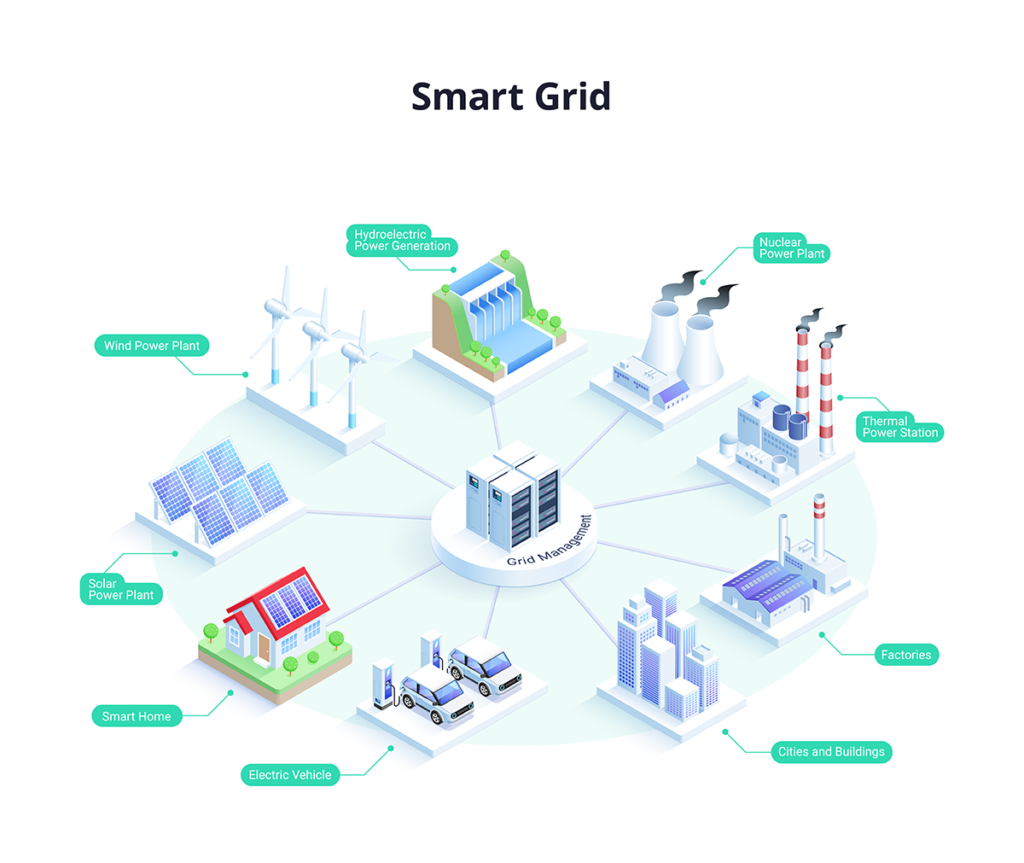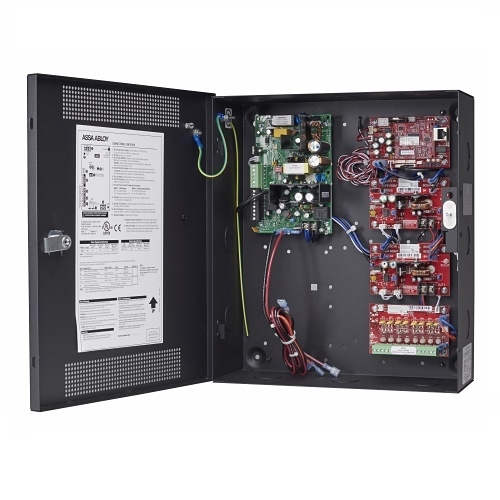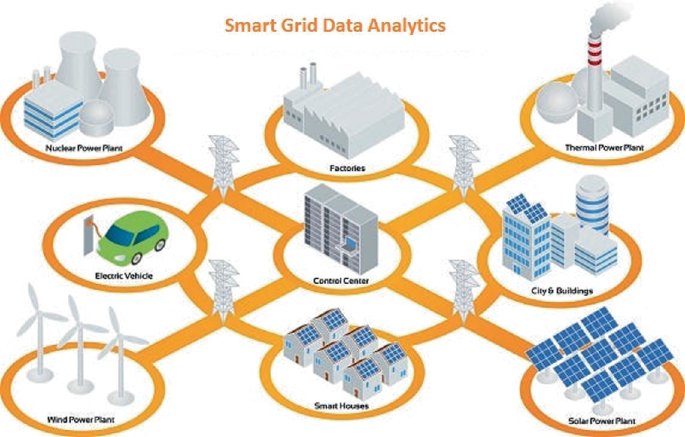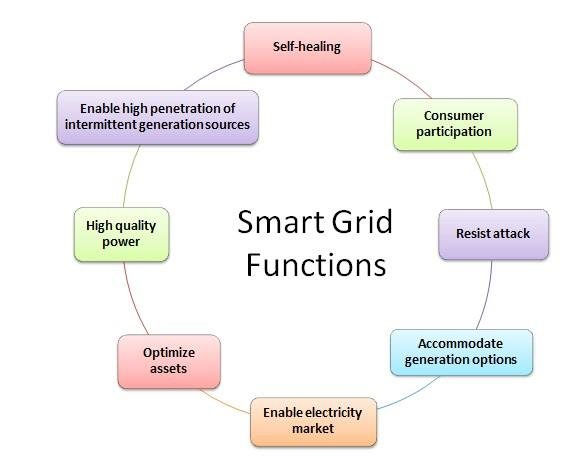Overview
A smart grid uses information, communication, sensing, control, and computing technologies to upgrade the traditional power grid into a system that enables more efficient, reliable, secure, environmentally friendly, and sustainable energy use. The smart grid transforms the traditional one-way power delivery model into a bidirectional flow of power and information, enabling efficient data collection, intelligent distribution, and coordinated allocation of limited resources to optimize generation, transfer, and storage of electrical energy.
By applying modern information technologies, a smart grid can provide fast and precise monitoring of power quality, distributed intelligent control and scheduling of energy, hybrid supply of renewable and conventional generation, real-time energy procurement and power negotiation, demand monitoring, specialized demand forecasting, and strict information protection. These capabilities improve the grid's resilience to disturbances, lower energy costs, reduce waste and environmental impact, and increase energy utilization efficiency.
Key characteristics of a smart grid include:
- High reliability: Increased monitoring, redundant components, and professional maintenance practices improve the reliability of power delivery.
- High flexibility: Real-time control and interactive communications enable automatic adjustments according to demand and conditions, providing flexibility in energy analysis and load regulation.
- High interactivity: Large volumes of data are collected and analyzed to accurately assess electricity usage and optimize user demand, enabling supply-demand matching and supporting industrial operations.
In summary, a smart grid upgrades the traditional power system to achieve higher efficiency, reliability, sustainability, and environmental performance, and it has significant practical and developmental potential.
How a Smart Grid Works
The smart grid integrates various information and data sources to improve monitoring and control of overall grid operations, enabling a more efficient, reliable, secure, and sustainable power system. Its main operating principles include:
- Energy management: Intelligent circuit monitoring devices collect energy consumption and load variation data and transmit these data to a centralized control center for management and optimization. This approach maximizes energy efficiency and minimizes waste.
- Information technology: The smart grid integrates digital communication and computing technologies to process and transmit internal and external data in real time. Grid operators and users can connect via the Internet to monitor grid operation and energy usage.
- Self-test and self-healing: The grid supports self-testing and self-healing functions. Internal power monitors can detect cable faults, transformer damage, and other issues and initiate automated repair actions when problems are found, enhancing system robustness.
- Two-way communication: Two-way communications enable utilities to remotely monitor end users and allow customers to send feedback to utilities. This feedback comes from multiple data sources and higher accuracy, providing better operational data and monitoring.
- Secure distribution design: The smart grid uses secure electrical line designs and remote communications so operators can better control and manage the system.
Overall, the smart grid uses information, communication, sensing, control, and computing technologies to optimize grid performance, improve efficiency, and strengthen stability and reliability while supporting environmental protection.
Main Advantages
The smart grid offers several advantages over traditional power systems, including:
- Flexible generation and consumption: Smart meters and intelligent billing systems enable automated energy allocation based on demand and support hybrid supply from various clean energy sources to improve utilization and quality.
- Operational robustness: The system can implement redundancy and independent operation modes, maintaining stability and reliability even during faults or attacks.
- Improved energy utilization efficiency: Integration of transmission, storage, and management technologies enables efficient energy use and distribution. Adaptive allocation mechanisms provide automated control that improves overall system performance and efficiency.
- Sustainable development: The smart grid can integrate renewable energy facilities to reduce reliance on fossil fuels and mitigate environmental impacts, supporting broader sustainability goals.
- Strong security: Measures such as encryption, backups, and fault detection help protect data transmission, information storage, and device integrity, ensuring system security.
Uses
The smart grid combines technologies and solutions to automate and intelligently manage all segments of the power system. Major uses include:
- Improve power quality: Real-time monitoring, control, and maintenance of power quality increase stability and reduce waste and losses.
- Increase supply reliability: Modern communications and sensors provide real-time node information, enabling early detection, prediction, and prevention of potential issues to improve reliability.
- Optimize energy use: Automated adjustment and management optimize energy consumption, realizing energy savings and cost reductions.
- Support renewable energy: The grid effectively manages daily use and storage of renewable sources to ensure optimal utilization.
- Enable electricity market participation: The smart grid supports individualized consumer needs and market participation, facilitating optimized matching of multiple energy sources and enabling data-driven innovations.
- Ensure security: Encryption, backups, and other protective measures secure the energy supply system, including equipment, networks, and data.
Applications
By combining traditional power systems with advanced information technologies, the smart grid achieves automation, intelligence, efficiency, safety, and sustainability. Typical applications include:
- Energy management systems: The energy management system (EMS) is a core component that controls multiple energy inputs and outputs. It uses Internet of Things technology to coordinate data exchange and resource allocation between systems to maximize energy utilization.
- Distributed generation: Small, independent generation units decentralize energy production and enable demand-driven local supply while reducing waste and pollution.
- Smart meters: Unlike traditional meters, smart meters collect, transmit, and measure electrical parameters in real time, enabling users to monitor consumption and flatten peak-valley load profiles.
- Energy storage: Technologies such as supercapacitors, pumped storage, and storage batteries allow energy to be stored and dispatched as needed, providing emergency power during shortages or extreme weather.
- Intelligent load management: Smart grid technologies enable dynamic load adjustments based on grid capacity, reducing peak demand and average load while improving efficiency and reliability.
- Charging for electric vehicles: The grid can coordinate vehicle charging and energy recovery, supporting efficient, reusable transportation with scalability and economic benefits.
In summary, smart grid applications enable intelligent allocation of energy resources, improve utilization efficiency, and make power systems more intelligent, efficient, secure, and environmentally friendly.
 ALLPCB
ALLPCB


